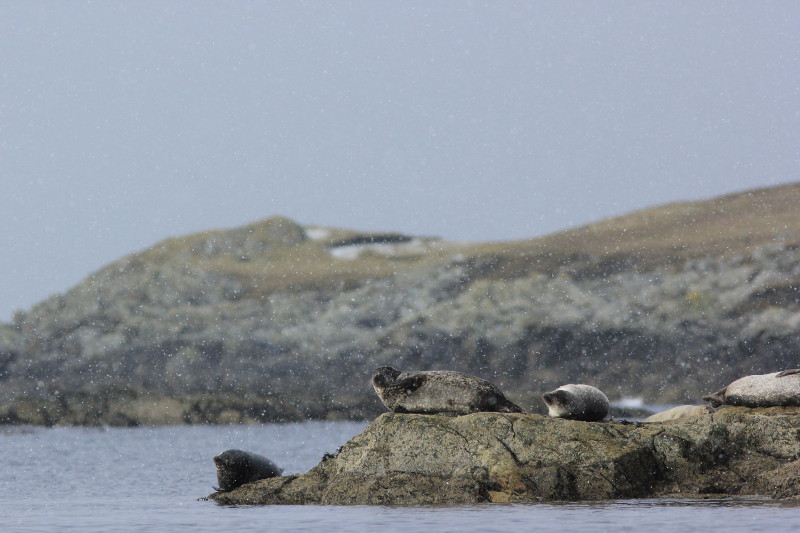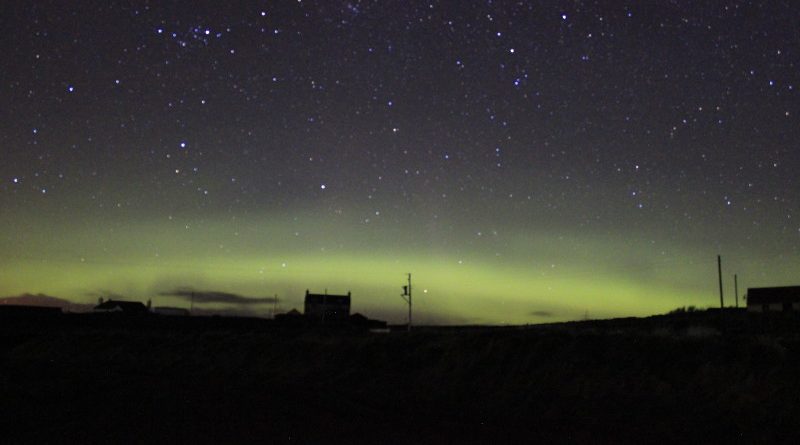Shetland 2017: Otters and the northern lights
In March this year we spent a week staying on Yell, Shetland. It was our fifth visit to the Northern Isles, although our first in winter. But the change of season made no difference to our enjoyment.
As always, Shetland was a beautiful and tranquil place to spend time. Although it was too early for most nesting birds, opportunities for spotting otters and the northern lights more than compensated. Here are a few photo highlights from our trip.
Before we headed north on the day we arrived, we drove down from the ferry terminal at Lerwick to the RSPB reserve at Sumburgh Head. Always a great spot to blow away the cobwebs after a night on the ferry. In this picture we’re looking back up the coast towards Sumburgh Airport:
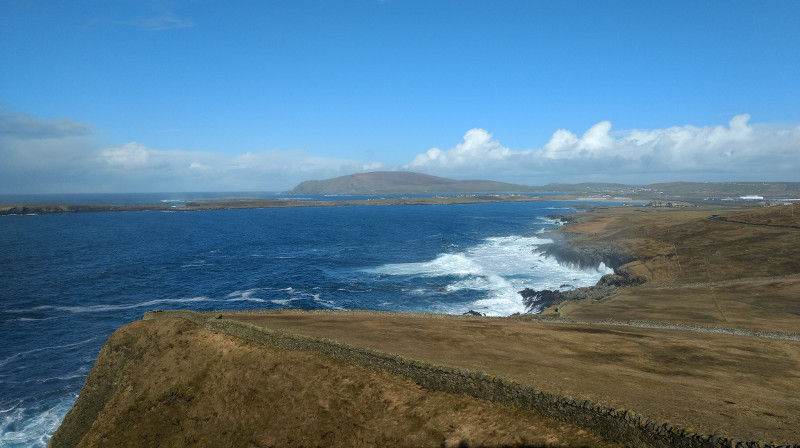
Moving north, the rest of these photos were taken on Yell, Unst and Fetlar.
Sunrise over Burra Voe:
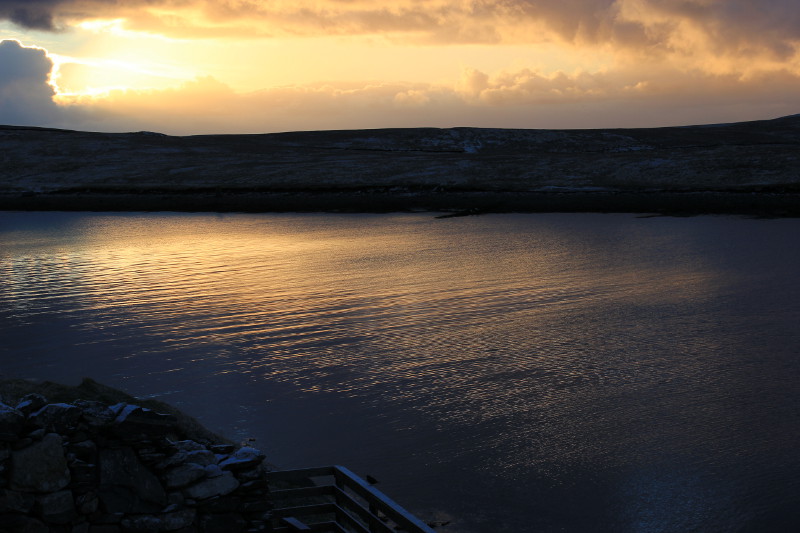
Note the frosting of snow. We had such a dusting on three days, giving a fresh look to familiar Shetland scenery. Overall, we were lucky with the weather — we only had one wet day and no gales while we were there. But the wind means that it usually feels cold — worth dressing warmly for long days outside.
The view at Hermaness Nature Reserve on Unst. Blissfully free of people (we saw one person in about five hours) at this time of year. Can be ‘busier’ (relatively…) in summer, mostly with wildlife tours. Fortunately the 45 minute uphill walk from the car park deters too many casual visitors.
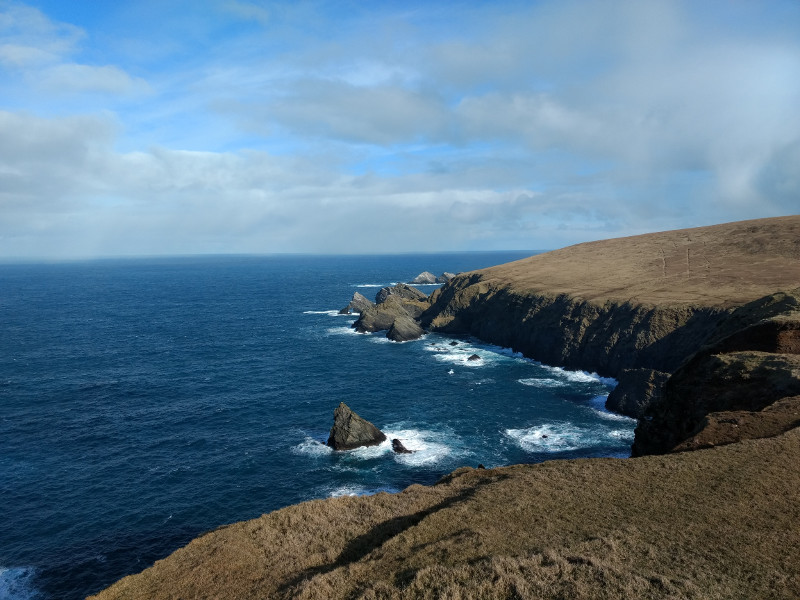
In the picture above, you can see two small rocky outcrops in the distance. One of these is the island of Muckle Flugga, home to Britain’s most northerly lighthouse:
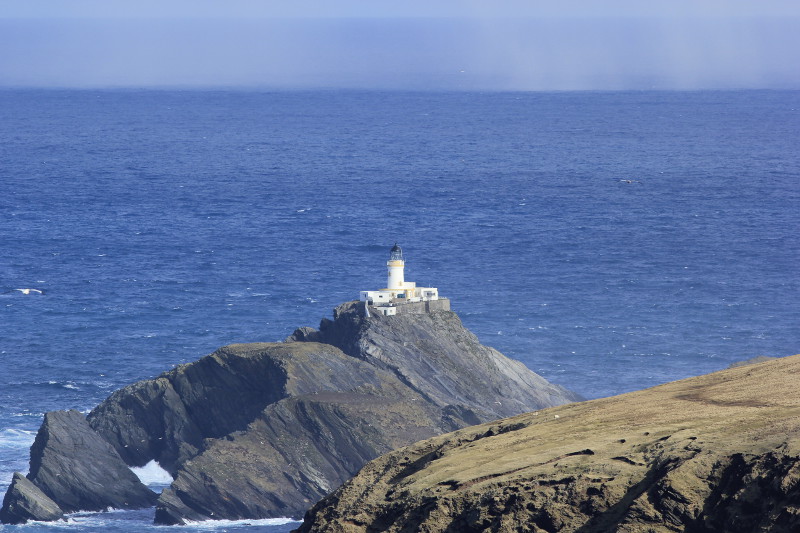
It was too early in March for nesting seabirds such as Puffins, but gannets arrive to breed early in the year and were already present in large numbers at Hermaness and elsewhere.
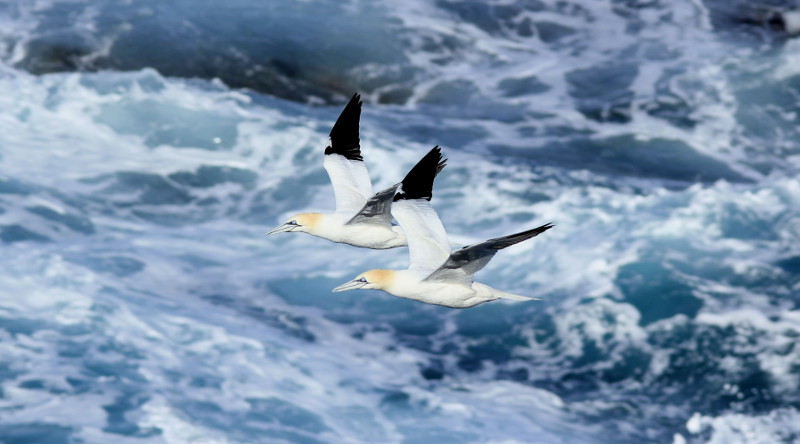
We don’t have a photo to prove it, but on more than one occasion we sat and watched gannets diving for fish until we’d seen so many that it was starting to feel commonplace… If you’ve never seen gannets fishing, it’s a fantastic sight. These large birds can have a 6ft wingspan. When they dive for fish they fold back their wings like a fighter jet and hit the water at up to 60mph.
Of course, this is what the trip was really about — OTTERS! We saw this chap on more than one occasion, he had quite regular habits (this photo was taken from inside our holiday cottage with a 300mm lens, so we weren’t that close and didn’t disturb it):
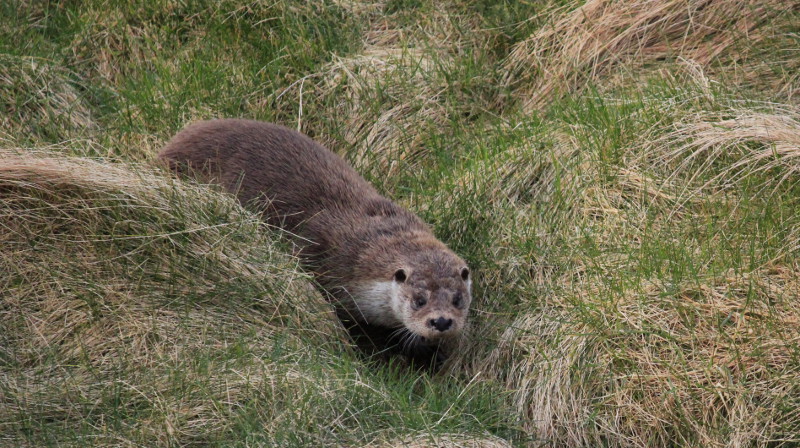
And it just got better. We lost track of time while we sat watching this fellow enjoying a rockfish dinner. He didn’t get wind of us and seemed completely at ease among the rocks:
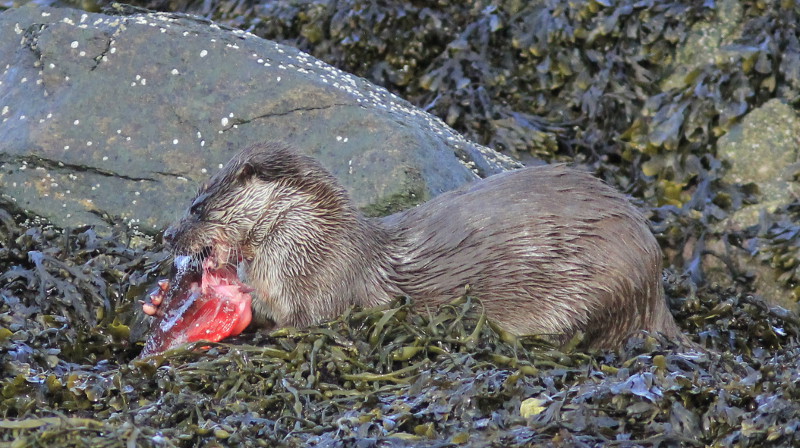
I should point out that this photo and the other otter picture have been heavily cropped and were taken with a 300mm lens and a 1.4x converter. We weren’t close at all, and took care to avoid causing any disturbance.
The otters were fantastic, but we had seen them before, albeit not feeding like this. But the next natural wonder we saw was new to both of us. One of the highlights of heading north early in the year is that it’s the season for northern lights.
We got lucky and managed to see the aurora borealis in action a couple of days before we were due to leave:
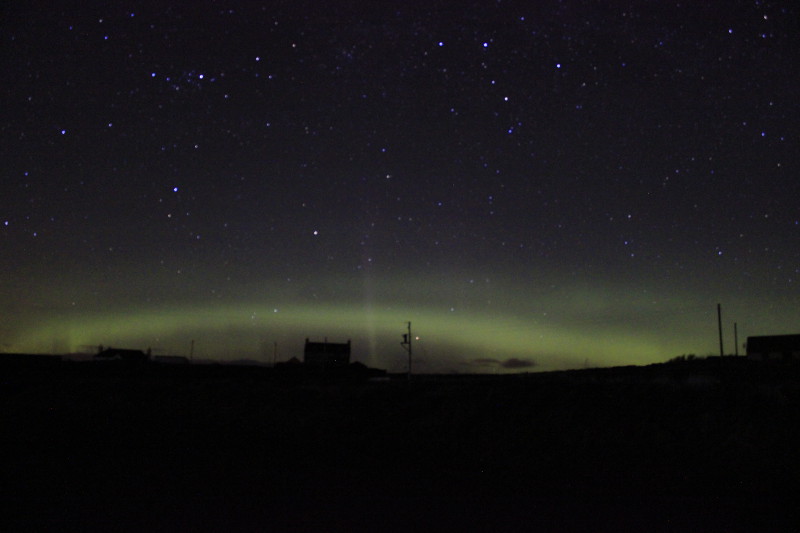
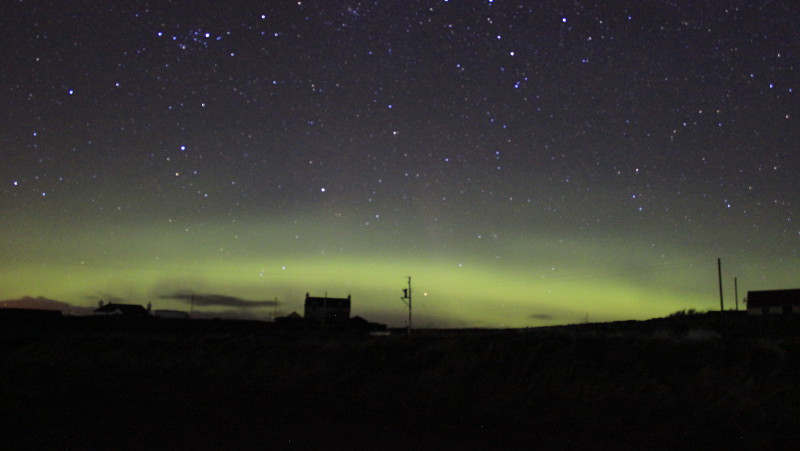
It wasn’t the most spectacular display, but it was our first and we were pleased. One point worth noting is that it always looks much more impressive in photos than in real life. This is because these pictures were taken on a c.15 second exposure, so the aurora effect was greatly exaggerated compared with what you could see with the naked eye.
We were lucky with the weather, but it did rain occasionally. I’m pretty sure we found the end of this rainbow one afternoon on Fetlar, but there wasn’t a pot of gold. Great view, though.
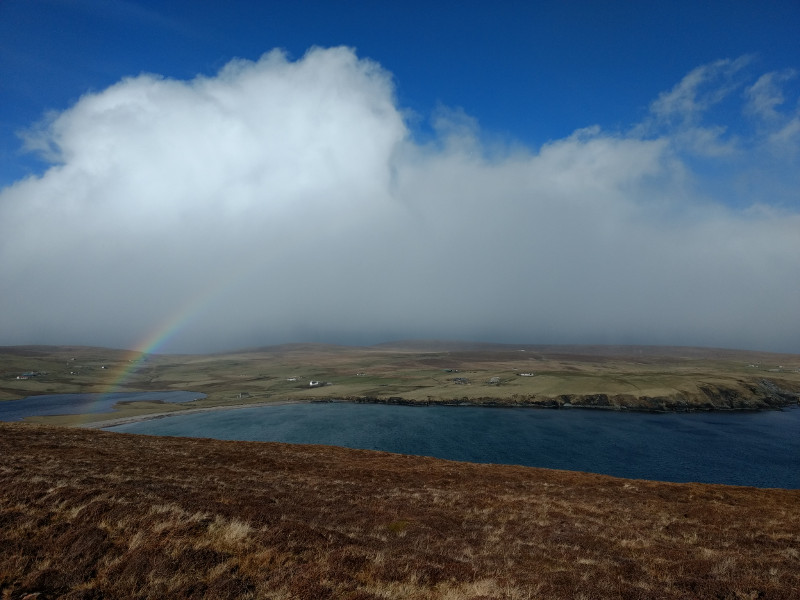
One of the more sombre attractions on Yell is the memorial to the RAF Catalina flying boat, which crashed at night on 19 January 1942. Returning from an aborted mission to bomb the German battleship Tirpitz, the Catalina was unable to raise RAF Sullom Voe on the radio. Conditions were poor and without the runway being illuminated, no landing was possible. The plane was circling the area when it crashed into the Hill of Arisdale.
There’s a memorial to the airmen (only one of whom survived) at the site of the crash, and the remains of an engine and one wing. This is a good walk with some great scenery and views, but our experience (and we are regular walkers) was that it takes longer than the guide books suggest. The return walk took us two hours at a reasonable pace. The path is clearly marked with white-topped posts. Here’s a snapshot of the views en route:
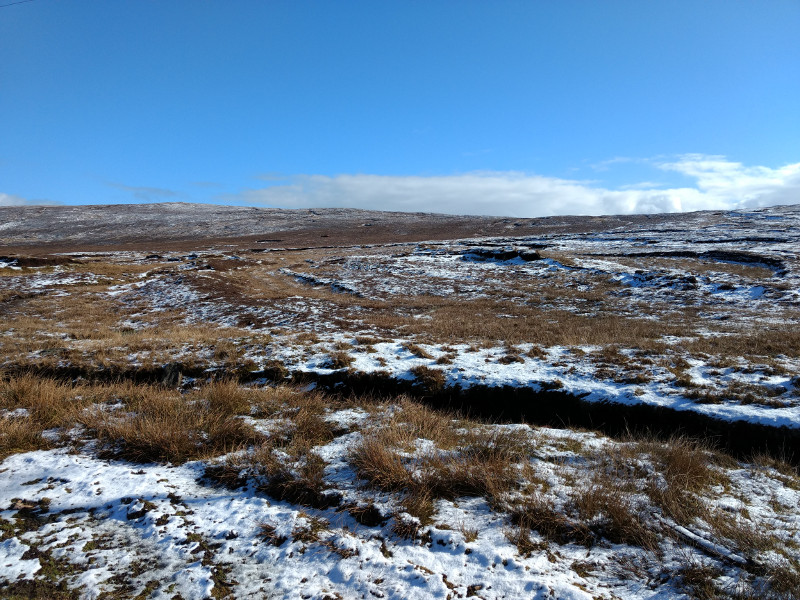
Finally, I’m going to end on a lighter note — seals in the snow. Where else but Shetland?
